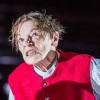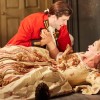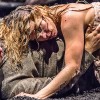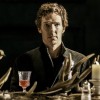A Midsummer Night’s Dream at the Royal Shakespeare Theatre, Stratford-upon-Avon
reviewed for The Times, 25th February 2016
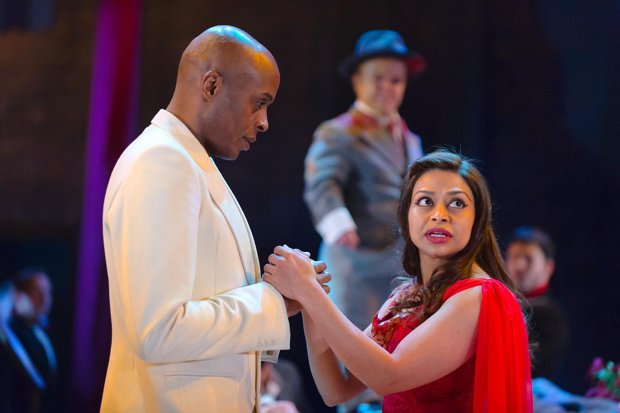
Chu Omambala as Oberon and Ayesha Dharker as Titania in A Midsummer Night’s Dream: A Play for the Nation. Image Credit: Topher McGrillis
![]()
A Midsummer Night’s Dream must be the nation’s favourite play. So, in Shakespeare’s anniversary year, the Royal Shakespeare Company’s deputy artistic director, Erica Whyman, has set out to democratise it, with a demographically diverse cast, 580 children taking turns as fairies and a revolving rota of amateur troupes brought in to play the rustic mechanicals at each new town on the tour route. If that sounds like a politically correct remake, fear not. What makes this Dream a roaring success are two old-school weapons: a roster of top-notch performances and Whyman’s fidelity to Shakespeare’s joyous energy.
Set in the late 1940s, this is Britain on the cusp of change. As Theseus and Hippolyta, Sam Redford’s and Laura Harding’s stagey, reserved takes on the Windsor royals are shadowed by Chu Omambala’s black Oberon and Ayesha Dharker’s British Indian Titania. Jazz and Hindi music mingle as they meet — this is, for once, a fairy couple bristling with erotic energy. They and our interracial mortal couples represent the future of modern Britain — behind them, young evacuees beam as the coloured paint of the Holi festival blends with Blitz rubble on their drab, wartime clothes.
Acrobatic, life-affirming Lucy Ellinson was born to play Puck. An androgynous circus master, she reserves her only sneer for the heterosexual predictability of Athens’s earthly couples. (“Two of both kinds makes up four.”) Among them, Mercy Ojelade understands instinctively the complexities of Hermia’s language; Chris Nayak is a deliciously creepy Demetrius, soon revealing pitch-perfect comic timing. Jack Holden’s Lysander is endearingly, if disjointedly, earnest. As a ham-handed, fidgety Helena, however, Laura Riseborough rushes over the verse, although there’s real emotional credibility to her all-too-human heartbreak.
Other moments jar occasionally. For all Omambala’s melancholic charisma, he seems to have been directed to glide, in slow-motion, through treacle, as if perpetually stuck in the Chariots of Fireopening credits. As the first amateur group to get their turn, the Nonentities of Wyre Forest took the big stage in their stride, although it feels counterintuitive to see them embody Shakespeare’s snobbish parody of the amateur actor. It’s good to see a self-consciously inclusive production include a disabled actor, but is it the most progressive use of the vertically challenged Ben Goffe to reveal him, with sickly cuteness, trilling a doll-sized fairy piano? (Things get more fun when, invisible, he exacts revenge on Lysander’s use of “dwarf” as an insult.)
If he’s fighting for respect, so too, in this casting, is Sue Downing’s female Quince, a theatre director with an endless supply of patience. Whyman has long proved herself a great female pioneer; here too she emerges an emotional magician.


